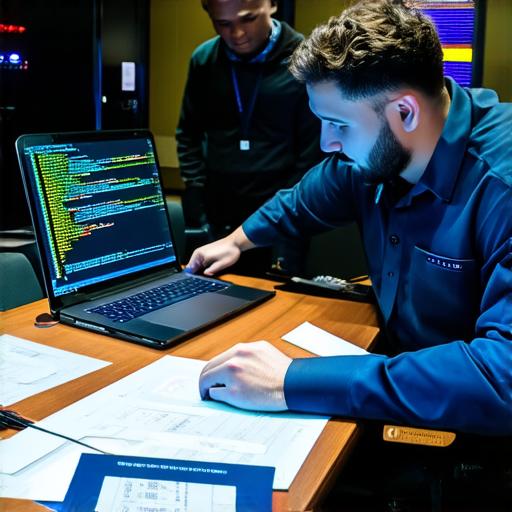Blockchain technology is rapidly gaining traction in various industries worldwide, including finance, healthcare, supply chain management, and more. As such, there’s a high demand for skilled blockchain developers who can help organizations implement these cutting-edge technologies.
What is Blockchain Technology?
Before we dive into the world of blockchain development, it’s essential to understand what blockchain technology is. At its core, a blockchain is a distributed ledger that records transactions across multiple computers. This decentralized system ensures that all participants have access to the same information and eliminates the need for intermediaries, making it secure and transparent.
Types of Blockchain Development
There are several types of blockchain development, including:
- Public Blockchains: These are open-source blockchain networks that allow anyone to participate in the network and create new blocks. Examples include Bitcoin, Ethereum, and EOS.
- Private Blockchains: These are closed-source blockchain networks that only allow authorized participants to join the network and create new blocks. They are often used for enterprise applications.
- Hybrid Blockchains: These are a combination of public and private blockchains that allow organizations to leverage the benefits of both models.
- Consensus Mechanisms: These are the algorithms that govern how nodes on a blockchain network validate transactions and create new blocks. Some common consensus mechanisms include Proof-of-Work (PoW), Proof-of-Stake (PoS), and Delegated Proof-of-Stake (DPoS).
Skills and Tools Needed for Blockchain Development

To become a blockchain developer, you’ll need to have a solid understanding of programming languages such as Solidity, Python, and Java. You should also have experience working with databases, web development, and cloud computing.
Additionally, you’ll need to be familiar with the various tools and platforms used in blockchain development, including:
- Integrated Development Environments (IDEs): These are software programs that provide a comprehensive environment for writing and testing code. Examples include Truffle, Remix, and Visual Studio Code.
- Blockchain Explorers: These are web-based tools that allow you to view and analyze the data stored on blockchain networks. Examples include Etherscan, MyEtherWallet, and Blocto.
- Wallets: These are digital wallets that allow you to store and manage your cryptocurrencies. Examples include MetaMask, Coinbase Wallet, and Trezor.
- Blockchain Testnets: These are simulated blockchain networks used for testing and debugging smart contracts before deploying them on the main blockchain. Examples include Ropsten, Rinkeby, and Goerli.
Case Study: Learning to Develop Smart Contracts on Ethereum
Let’s take a look at how you can learn to develop smart contracts on Ethereum, one of the most popular blockchain networks.
Step 1: Set up your development environment
To start developing smart contracts on Ethereum, you’ll need to set up your development environment. This involves installing an IDE, such as Truffle, and setting up a wallet, such as MetaMask. You’ll also need to create a new project in your IDE and configure it to connect to the Ethereum mainnet or a testnet.
Step 2: Learn Solidity
Solidity is the programming language used for writing smart contracts on Ethereum. To become proficient in Solidity, you’ll need to start by learning the basics of programming concepts, such as variables, data types, control structures, and functions. You can find plenty of resources online, including tutorials, videos, and documentation.
Step 3: Write your first smart contract
Once you have a solid understanding of Solidity, you can start writing your first smart contract. This should be a simple program that performs a basic function, such as adding two numbers or storing data in a database. As you gain more experience, you can move on to more complex contracts that interact with the Ethereum blockchain.
Step 4: Test and deploy your smart contract
Before deploying your smart contract on the Ethereum mainnet, it’s essential to test it thoroughly to ensure it works as intended. You can use a local blockchain or a testnet to test your contract before deploying it on the main network. Once you’re confident that your contract is working correctly, you can deploy it on the Ethereum mainnet using your IDE.
Step 5: Continue learning and experimenting
Blockchain development is an ever-evolving field, and there’s always something new to learn. As you continue to develop smart contracts on Ethereum, try to experiment with different programming techniques and explore the various tools and platforms available. This will help you become a more skilled and versatile blockchain developer.
Personal Experience: Learning to Develop Blockchain Applications
As a blockchain developer, I’ve had the opportunity to work on several projects that involved building decentralized applications (dApps) using Ethereum smart contracts. Here are some of my key takeaways from my experience:
- Blockchain development is challenging but rewarding
- Collaboration is key
- Patience is necessary
- Stay up-to-date with the latest developments
Conclusion
In conclusion, becoming a blockchain developer requires a solid understanding of programming concepts, tools, and platforms, as well as experience working with real-world projects. With dedication, collaboration, and a willingness to learn and experiment, anyone can become a proficient blockchain developer.
